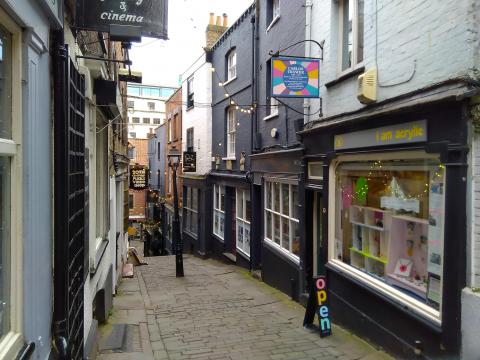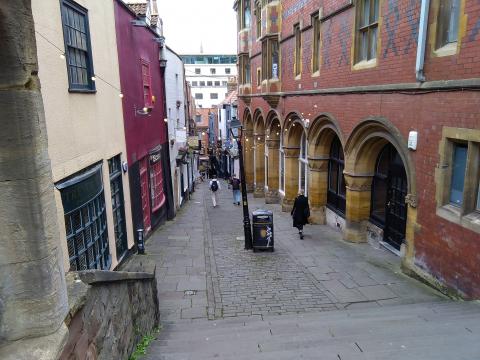Christmas Steps

While visiting Bristol in the autumn, I found myself walking up an extremely interesting but hard-going hill. I was further intrigued to see the signpost at its top and bottom: Christmas Steps. Rudimentary research soon showed that this delightful name was a corruption of Knifesmith Street, with a writer called William Worcestre in 1480 calling it 'knyfesmythstrete or Cristmastrete’. The K in the Middle English knyfe is pronounced, not silent, so one can understand the transformation. Manufacturers of knives are important and useful, but Christmas Street or Christmas Steps sounds the lovelier. Seventeenth-century merchants attempted to rename it Queen Street, bestowing a greater elegance on their addresses, or seeking to avoid Christmas’ ‘popish’ associations which preoccupied many of that century’s puritans.

It is true that the season called Christmas assumes an importance in the church that it does not deserve, and an association with greed, gluttony and gourmandising that sober and chaste folk would do well to avoid. Nevertheless, I like the idea of the Old Testament scriptures being seen as ‘Christmas Steps’: they anticipate the coming Messiah and Deliverer whose arrival is marked on December the 25th. If the Jewish scriptures might be termed Christmas Steps, the New Testament is surely the Apocalypse Steps- for this is the next major event on the cosmic calendar. Each year is a step towards Christ’s return, each month edges closer to the Great Conclusion.

Ev'ry island, sea, and mountain,
Heav'n and earth, shall flee away;
All who hate him, must confounded,
Hear the trump proclaim the day;
Come to judgment, come to judgment, come to judgment,
Come to judgment come away.
Answer thine own bride and Spirit,
Hasten Lord, the gen'ral doom,
The new heav'n and earth t' inherit,
Take thy pining exiles home,
All creation, all creation, all creation,
Travails! groans! and bids thee come.
-Charles Wesley. The above are two 'missing' verses from his famous hymn, Lo! He Comes
- Log in to post comments


 Sunday Worship 10.45am & 6.00pm
Sunday Worship 10.45am & 6.00pm